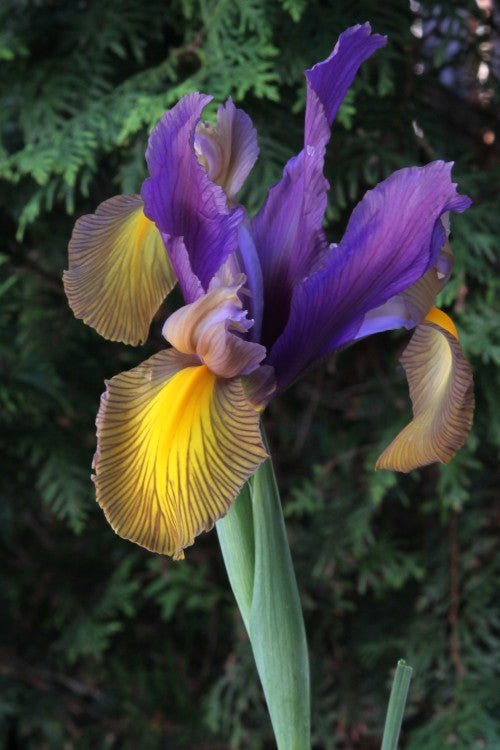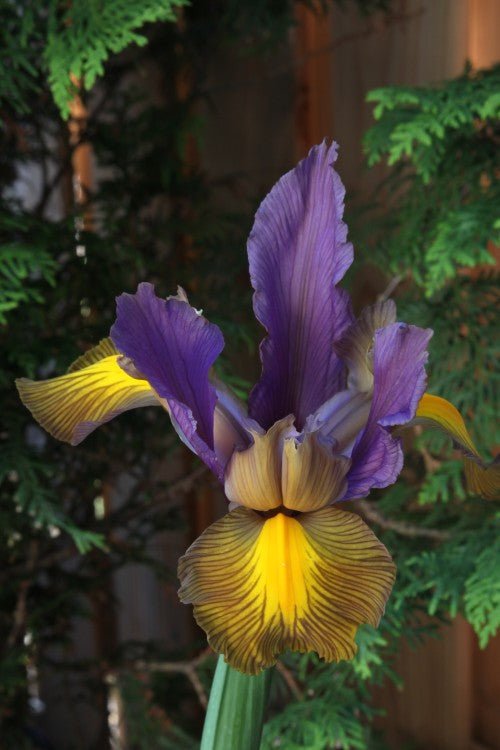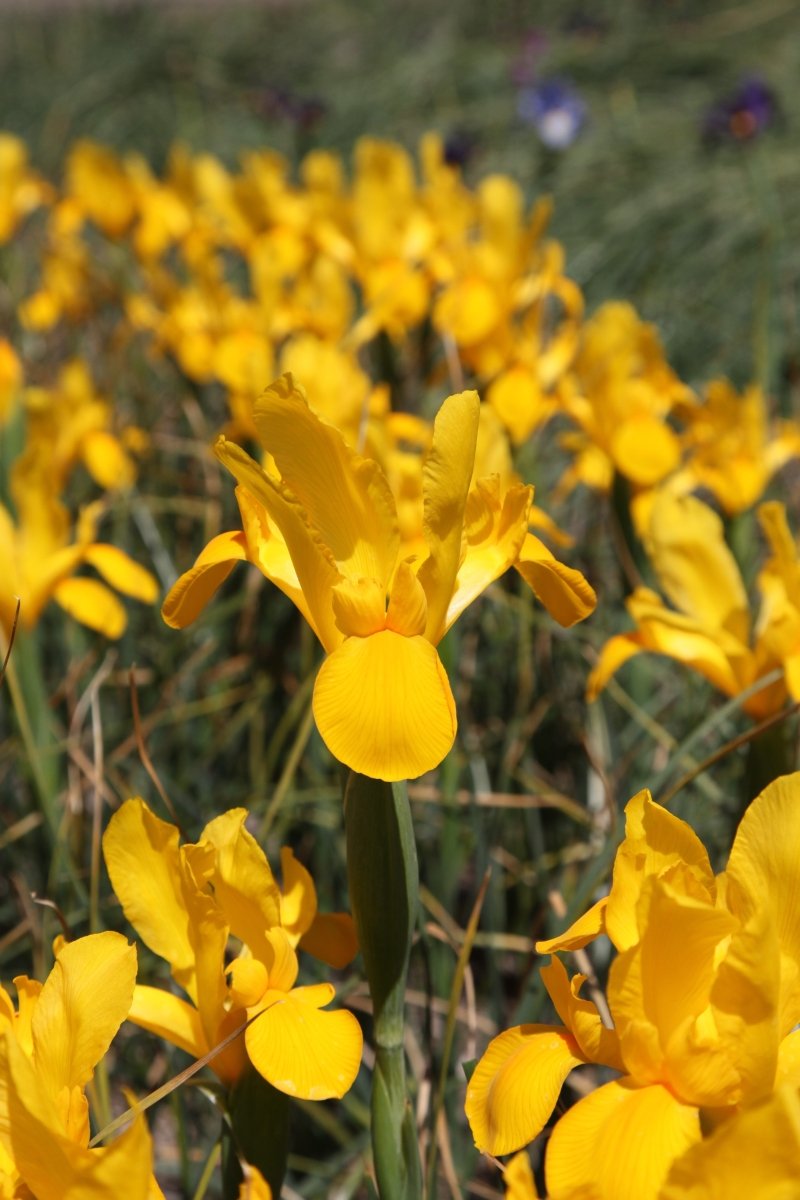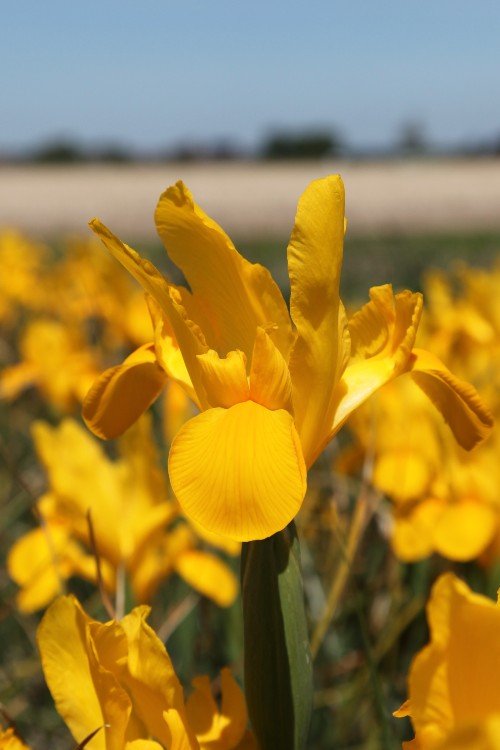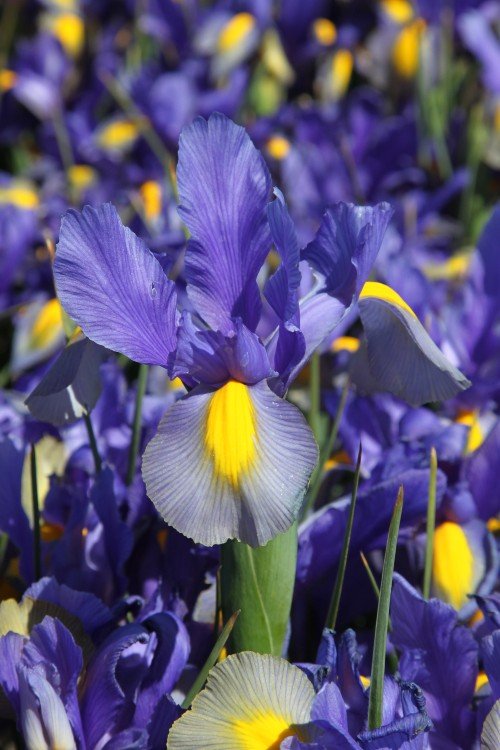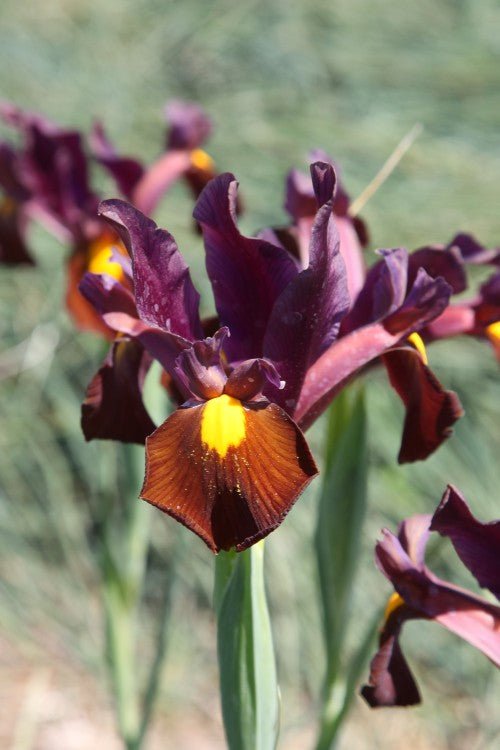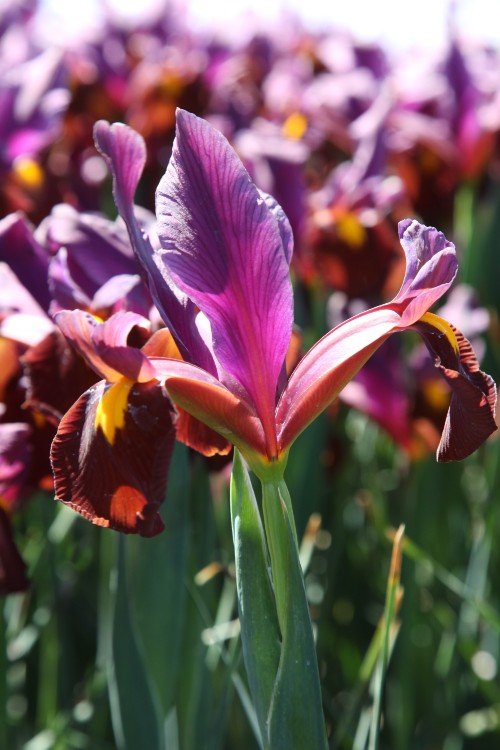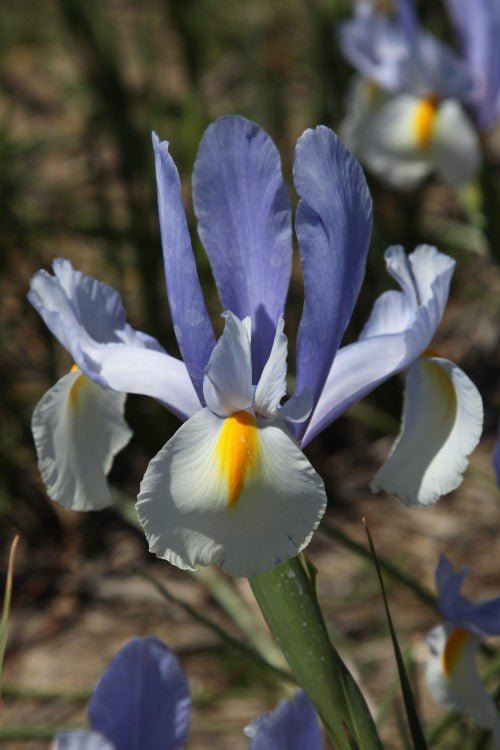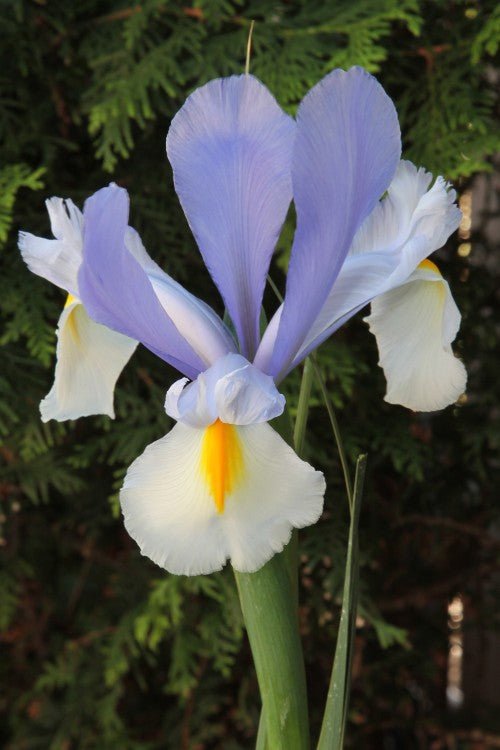Explore the Iris collection - Spring Flowering bulbs
Sort by:
About Eye of the Tiger
Immerse yourself in the allure of the Iris Eye of the Tiger and create a garden masterpiece that will leave everyone enchanted. This striking iris variety boasts vibrant, tiger-striped petals that are sure to leave you in awe. With its unique coloration and graceful form, the Iris Eye of the Tiger is a must-have for any garden enthusiast.
- Vibrant tiger-striped petals that create a bold and exotic look
- Sturdy and tall stems that make it perfect for cut flower arrangements
- Blooms in late spring, bringing a burst of color to your garden
- Low-maintenance plant that thrives in both sunny and partially shaded areas
- Hardy and resilient, withstanding various weather conditions
How to plant and take care of Eye of the Tiger
- Choose a location that receives full to partial sunlight.
- Prepare the soil by loosening it and adding organic matter for better drainage.
- Dig a hole that is deep enough to accommodate the rhizome, ensuring that the top is at or just below the soil level.
- Space the rhizomes approximately 3 inches apart to allow for proper growth.
- Water thoroughly after planting and keep the soil evenly moist but not waterlogged.
- Apply a balanced fertilizer once in early spring and again after blooming.
- Remove spent flowers to encourage new blooms and maintain a tidy appearance.
- Divide the rhizomes every three to four years to prevent overcrowding and promote healthy growth.
About Golden Beauty
Discover the captivating beauty of Iris Golden Beauty, a mesmerizing addition to any garden. With its vibrant golden petals and delicate fragrance, this exquisite iris variety will add a touch of elegance to your outdoor space.
- Vibrant golden petals that create a stunning visual impact
- Delicate fragrance that enhances the sensory experience
- Sturdy stems that provide excellent support to the flowers
- Easy to grow and maintain, perfect for both beginners and experienced gardeners
How to plant and take care of Golden Beauty
- Choose a sunny location with well-drained soil for optimal growth.
- Dig a hole slightly wider and deeper than the rhizome, ensuring good spacing between plants.
- Place the rhizome horizontally in the hole, making sure the top is slightly exposed.
- Gently cover the rhizome with soil, pressing it down firmly.
- Water thoroughly after planting and maintain regular watering during the growing season.
- Apply a balanced fertilizer in early spring to promote healthy growth.
- Remove faded flowers to encourage continuous blooming.
- Divide the rhizomes every three to four years to prevent overcrowding.
- Protect from extreme temperatures and pests by providing proper care and monitoring.
About Mystic Tiger
Unleash the captivating allure of nature with Iris Mystic Tiger! This stunning flower variety will mesmerize you with its mystical charm and vibrant colors.
- Exquisite blooms with a striking combination of blue and yellow tiger-like patterns
- Tall and elegant stems that add grace and beauty to any garden or floral arrangement
- Hardy and resilient plant that thrives in a variety of climates and soil conditions
- Long-lasting blooms that provide a delightful display year after year
How to plant and take care of Mystic Tiger
- Choose a sunny location in your garden with well-draining soil
- Dig a hole that is deep enough to accommodate the iris rhizome and ensure good drainage
- Place the rhizome horizontally in the hole, with the top slightly exposed above the soil
- Water the plant thoroughly after planting and keep the soil moist but not waterlogged
- Provide regular watering during dry spells and ensure adequate airflow around the plants
- Apply a balanced fertilizer during the growing season to promote healthy growth
- Remove any dead or faded flowers to encourage continuous blooming
- Divide the rhizomes every few years to maintain vigorous growth and maximize flowering
About Red Ember
Elevate your garden's aesthetics with the Iris Red Ember, a mesmerizing botanical masterpiece. With its vibrant maroon petals and delicate yellow accents, this iris variety is sure to ignite your flower beds with its alluring charm.
- Striking maroon petals with stunning yellow highlights
- Compact size, perfect for small gardens or containers
- Blooms in late spring to early summer, adding a burst of color to your landscape
- Easy to grow and low-maintenance, ideal for beginners
- Attracts butterflies and hummingbirds, creating a lively and enchanting atmosphere
How to plant and take care of Red Ember
- Choose a sunny location with well-drained soil.
- Plant rhizomes 4 inches deep and space them 3 inches apart.
- Water regularly, keeping the soil evenly moist but not soggy.
- Apply a balanced fertilizer in early spring and after flowering.
- Remove faded blooms to encourage more flowers.
- Divide clumps every 3-4 years to maintain vigorous growth.
- Protect from excessive moisture during winter months.
About Reticulata
Transform your garden into a stunning masterpiece with the captivating Iris Reticulata. Order now and bring an explosion of colors to your outdoor space. This exquisite flowering bulb will enchant you with its vibrant colors and delicate petals.
- Stunning and vibrant colors to add a burst of beauty to your garden
- Delicate and intricate petals that create an enchanting display
- Compact size, perfect for borders, containers, or rock gardens
- Early blooming, bringing joy and color to your garden in late winter or early spring
How to plant and take care of Reticulata
- Choose a sunny or partially shaded location with well-drained soil
- Plant the bulbs in the fall, about 4 inches deep and 3 inches apart
- Water thoroughly after planting and keep the soil slightly moist during the growing season
- Provide a layer of mulch to conserve moisture and suppress weeds
- Feed with a balanced fertilizer in early spring and after flowering
- Remove faded flowers to promote further blooming and prevent seed formation
- After the foliage turns yellow, you can cut it back to ground level
About Silvery Beauty
Indulge in the elegance of Iris Silvery Beauty and create a captivating garden masterpiece. Order yours today and elevate your floral landscape to new heights! With its delicate petals and shimmering silvery hues, this Iris variety is a true gem that will leave you mesmerized.
- Exquisite silvery petals that glisten in the sunlight
- Striking beauty and unique charm that will enhance your garden
- Sturdy and resilient plant that thrives in various climates
- Long blooming period for extended enjoyment
- Ideal for both garden beds and containers
How to plant and take care of Silvery Beauty
- Choose a sunny location with well-drained soil
- Dig a hole twice the size of the rhizome (root)
- Place the rhizome in the hole, ensuring the top is exposed
- Backfill the hole and gently firm the soil around the rhizome
- Water thoroughly after planting and keep the soil evenly moist
- Provide regular watering during dry spells
- Apply a balanced fertilizer in early spring and after blooming
- Remove spent flowers to encourage more blooms
- Divide the rhizomes every few years to maintain plant health
FAQs

